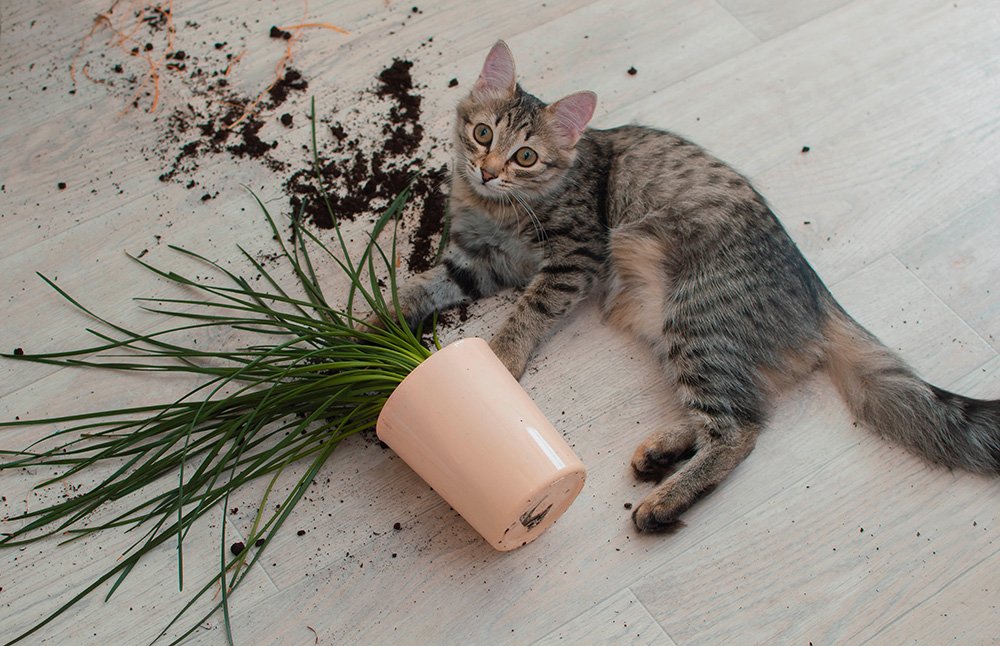COMPULSIVE / DESTRUCTIVE
BEHAVIOR
COMPULSIVE / DESTRUCTIVE BEHAVIORS
Compulsive or destructive behavior in cats is generally cause for concern, requiring careful observation and intervention from pet owners.
Cats, known for their independent nature, may exhibit compulsive behaviors such as excessive grooming, overeating, or repetitive actions that go beyond everyday feline habits. Stereotypic behaviors have no apparent function and are generally classed as repetitious. The behaviors typically come from commonly seen functions such as grooming, chasing, or stalking but are abnormal as they interfere with the cat's normal day-to-day functioning. In cats, these behaviors can appear as pacing or spinning, excessive vocalization, or excessive grooming.
Destructive behavior, such as scratching furniture or inappropriate elimination, can also be indicative of underlying issues.
MANAGING COMPULSIVE BEHAVIORS
Several factors may contribute to these behaviors, including stress, anxiety, medical issues, or changes in the environment. Identifying the root cause is crucial for effective intervention. Addressing environmental stressors and providing mental stimulation can help alleviate compulsive behavior. In some cases, pharmacological intervention is also helpful.
Pet owners can play a vital role in managing these behaviors by creating a consistent routine, offering enriching activities, and providing a safe and comfortable environment. Behavioral modification strategies can help ensure the well-being of the cat and foster a harmonious relationship between feline companions and their human caregivers.
Addressing compulsive behaviors in cats requires a comprehensive approach grounded in scientific understanding. Research suggests that compulsive behaviors in felines can result from various factors, including stress, anxiety, and environmental changes. To effectively tackle these issues, it is crucial to draw on evidence-based methods.
VETERINARY CONSULTATIONS AND HEALTHY ROUTINE
Scientific sources emphasize the importance of veterinary consultation to rule out underlying medical conditions contributing to compulsive behaviors. A study published in the Journal of Feline Medicine and Surgery highlights the correlation between specific medical issues and behavioral problems in cats, reinforcing the need for a thorough health assessment.
Behavior modification techniques, as outlined in studies like "Feline Behavior Guidelines from the American Association of Feline Practitioners," advocate for creating a predictable routine, offering environmental enrichment, and employing positive reinforcement. These strategies aim to address the root causes of compulsive behaviors and promote mental well-being in cats.
A science-backed approach to modifying compulsive behaviors in cats involves a combination of veterinary care, behavior modification, and environmental enrichment.
INSIGHTS & RESOURCES
Managing Compulsive Disorders in Cats
Sara L. Bennett, DVM, MS, DACVB, and Michael Z. Khan, DVM North Carolina State University College of Veterinary Medicine
Animal Models of Obsessive-Compulsive Behavior: A Neurobiological and Ethological Perspective
Nicholas H. Dodman and Louis ShusterAbnormal Repetitive Behaviors in Dogs and Cats: A Guide for Practitioners
Valarie V. Tynes, DVMa,*, Leslie Sinn, DVM, CPDT-KA
BOOK A
CONSULTATION
We’ll prepare a proposal and walk you through every step of the process.







